Do you blindly rely on the default landing page report of Google Analytics 4? Then it’s time to take action. More than 50% of the valuable data can be hidden. To reveal the hidden gems, you need to create a landing page exploration report and replace the default Landing Page dimension with another one.
TLDR;
- Landing pages in Google Analytics have a broader meaning than marketing landing pages.
- GA4 has a built-in default landing page report.
- You can add a 2nd dimension and show only metrics that matter to your site.
- The report hides information, but, in GA4, you can create a more reliable and relevant landing page report yourself.
- It’s easy to add it to the navigation menu.
- To get more insights about the keywords that people entered in Google before landing on your site, follow the steps in our free PDF guide.
What is a landing page in Google Analytics, anyway?
A page that has a clear focus and one specific goal is called a landing page in different marketing departments, such as:
- Web design
- CRO (Conversion Rate Optimization)
- SEO (Search Engine Optimization)
- PPC (Pay Per Click)
In Google Analytics, however, landing pages are all the pages where people enter your website, web shop, or even web application.
So, that can be:
- your homepage
- a (marketing) landing page
- a blog post
- and even an error 404 page.

Knowing where users start a visit on your site is valuable for many reasons. So, where can you find this data?
Let’s start with the built-in detail Landing Page Report.
Where do I find the landing page report in GA4?
To access the default landing page report, go to Reports > Engagement > Landing page.
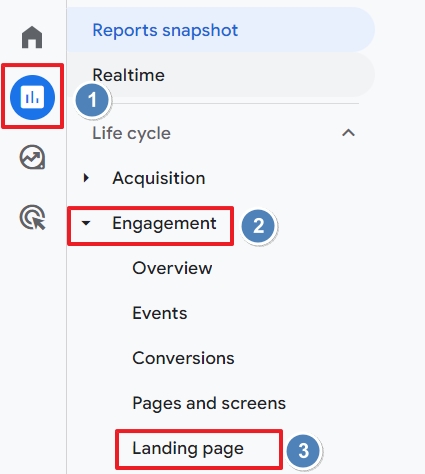
If you don’t see the report, you can find it in the Library of the Reports section.
To open it, double click on Landing Page.
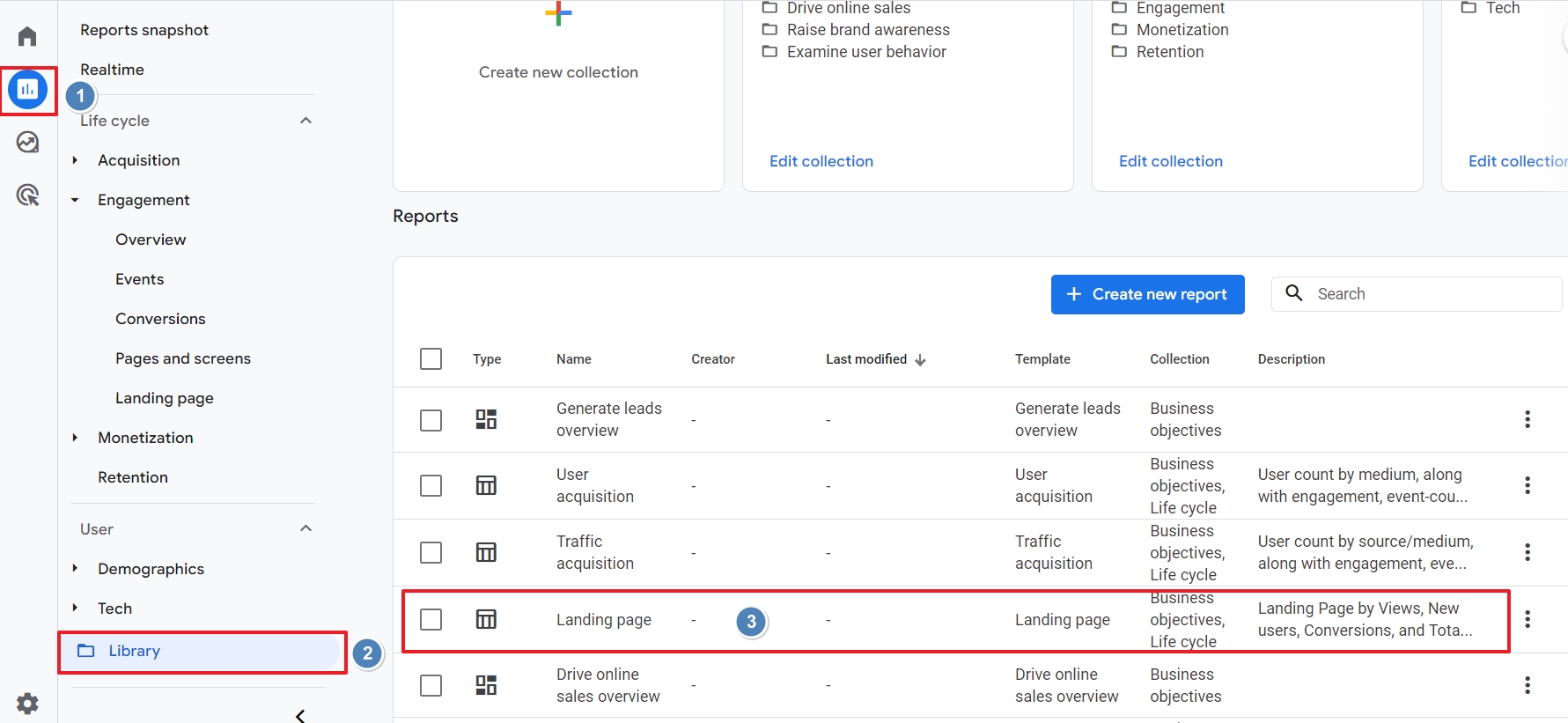
If you don’t see the Library section, you do not have sufficient access rights. Your best option is to write a hefty mail to an admin or editor of the account and demand that the report is added.
(Or share this article to save time explaining why you need this report to analyze and boost your site.)
Further below you can find the steps to add the default landing page report – or the ones you create yourself – to the GA4 menu.
Hang on, create one yourself?
Yep. That’s possible.
But maybe it’s not needed for you…
What data can you find in the GA4 landing page report?
Unlike other default detail reports, the Landing Page report only contains one chart. Below it, there’s a table with dimensions and metrics.
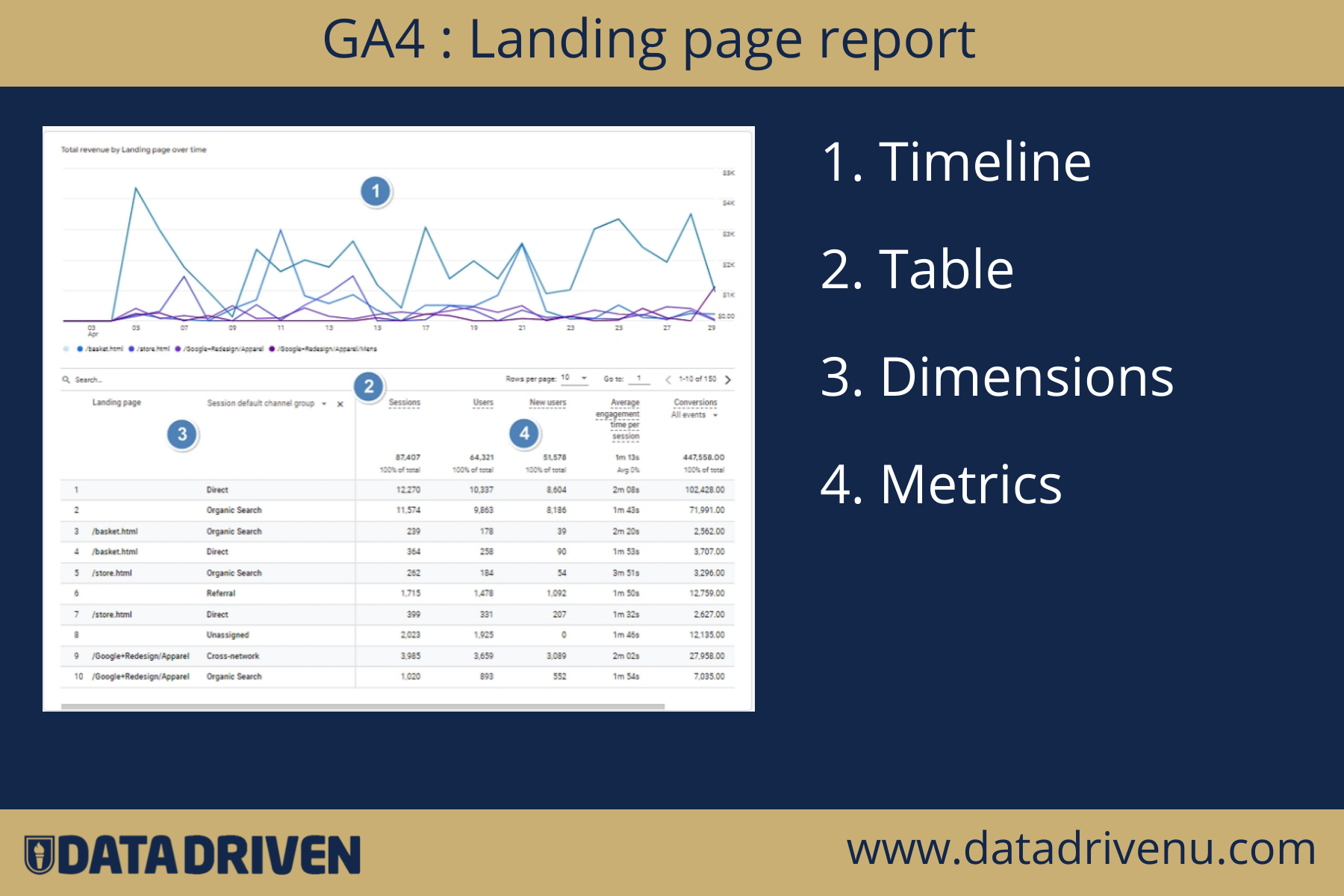
What do these 2 sections actually reveal?
Timeline landing pages
The chart of the report shows how many people landed over time on the 5 most popular landing pages of your site.
You can highlight pages by clicking on their slug at the bottom of the chart.
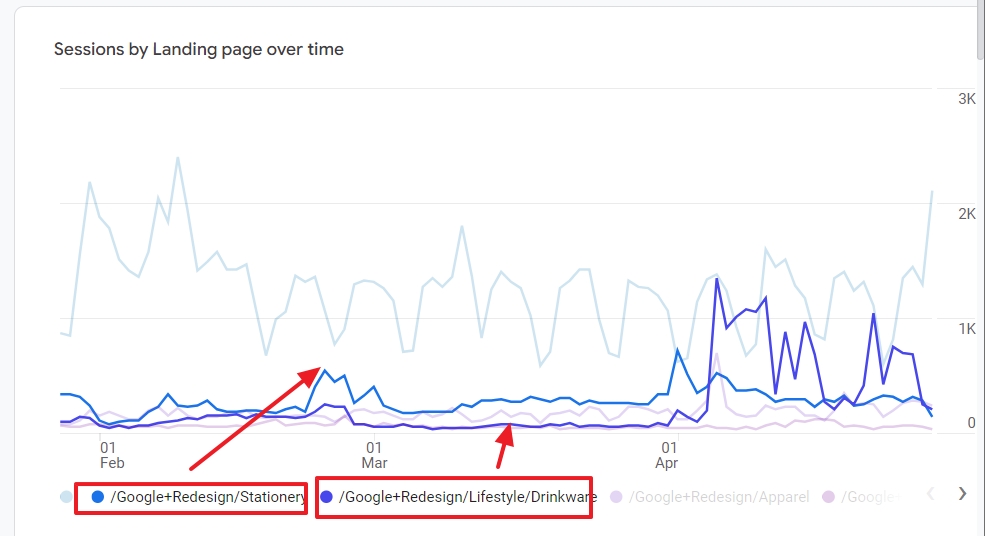
You can also compare the number of sessions of your 5 top landing pages for a specific day. To do so
- move your cursor over the chart.
- a tiny pop-up displays the number of started sessions
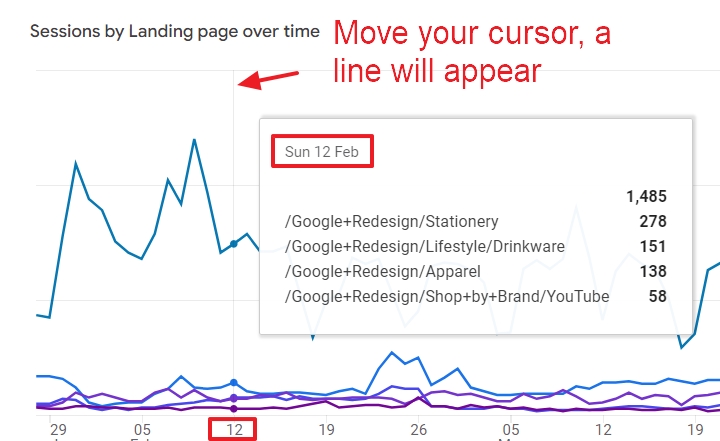
The table below the timeline contains all the landing pages.
Landing page data table
The table is interactive and with a few clicks, you can answer basic questions, such as:
What are your most/least popular landing pages?
To rank your landing pages from popular to least performant, click on the arrow next to the primary landing page dimension.
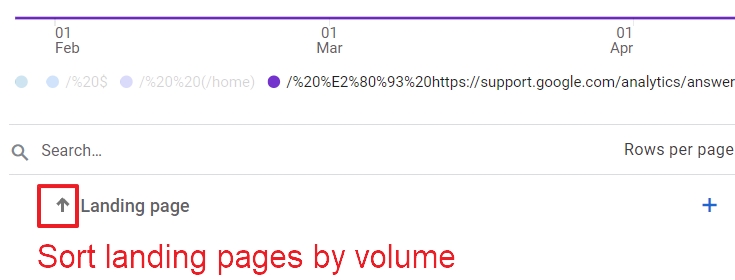
How much revenue did each landing page generate?
If you have set up monetization tracking for your site, app, blog, or web shop, you can see in the last column of the table how much revenue each landing page generated.
Click on the arrow to sort the table for this money metric.
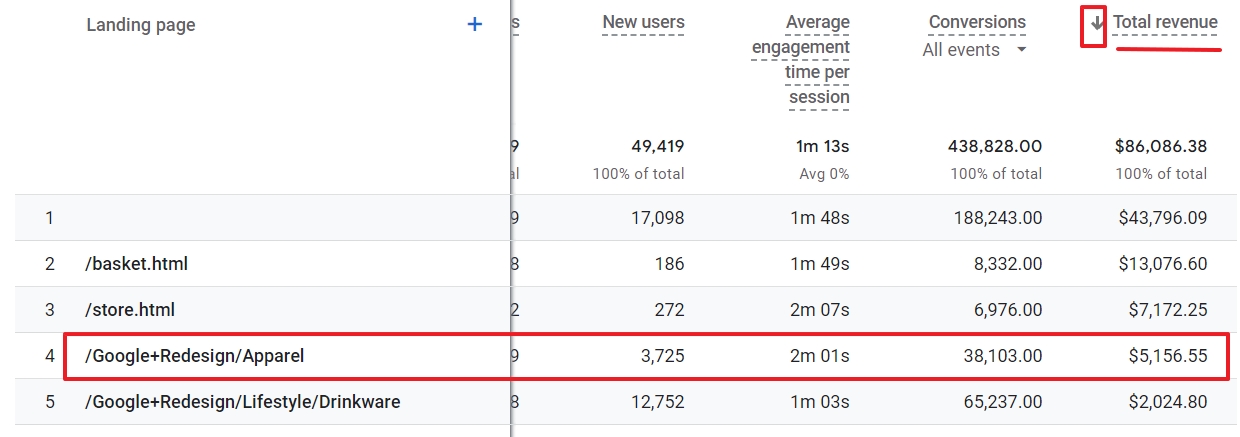
How many conversions happened on a landing page?
You can either see the total of all your conversions, or you can select a specific event that’s marked as a conversion.
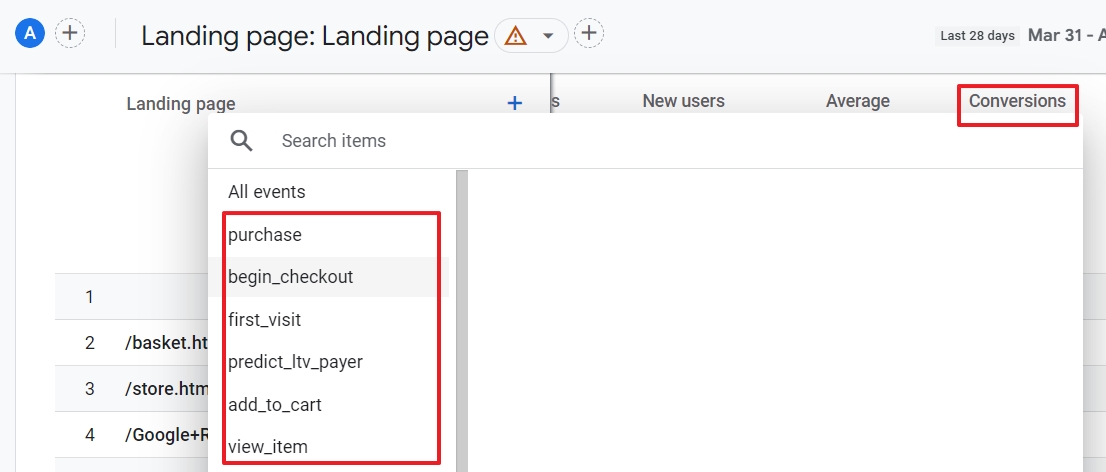
Other landing page metrics
The table also contains metrics per landing page for:
- Average engagement time
- Sessions
- Users
- New users
All this sounds great, but is it really?
GA4 Landing Page Dimension
The standard Landing Page report uses Landing Page as the default primary dimension.

That’s as useful as knowing that the main ingredient of a rice bowl is rice.
One of the main challenges is that this dimension is the so-called slug of the URL of the page.

Although slugs are unique, this sucks if you
- track multiple domains in the same GA4 property. A slug doesn’t reveal which domain people landed on.
- use slugs that reveal nothing about the content of the page

- you use the same slug on, for instance, your website and web application on a subdomain.
You can quickly fix this by adding a secondary dimension to your Landing Page report.
Click on the + sign and then search “host”.
Found it? Then click on Hostname.

Now you can at least see on which domains visitors landed.
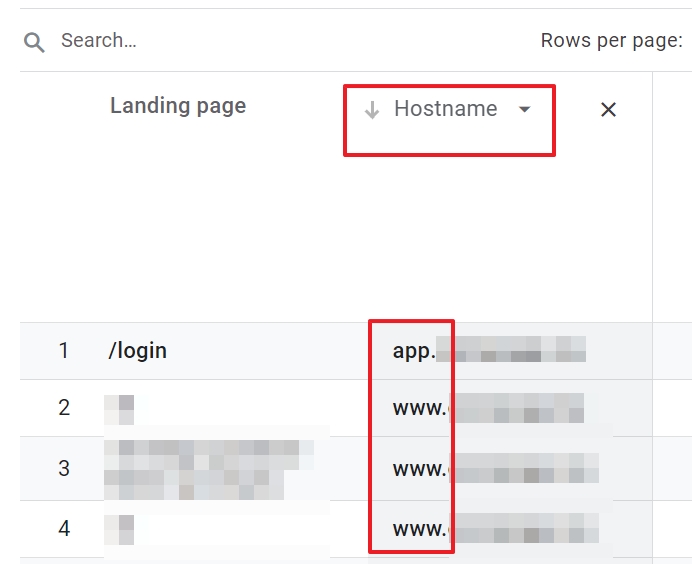
Unfortunately, this dimension and report trigger the nightmare of every data-driven marketer…
GA4 landing page not set
All landing pages that cannot be identified by GA4 are grouped together in a row called “Not set”. The problem is that this amount can be extremely high.
The screenshot below, for instance, shows that over 50% of the landing pages are not available for a proper analysis.
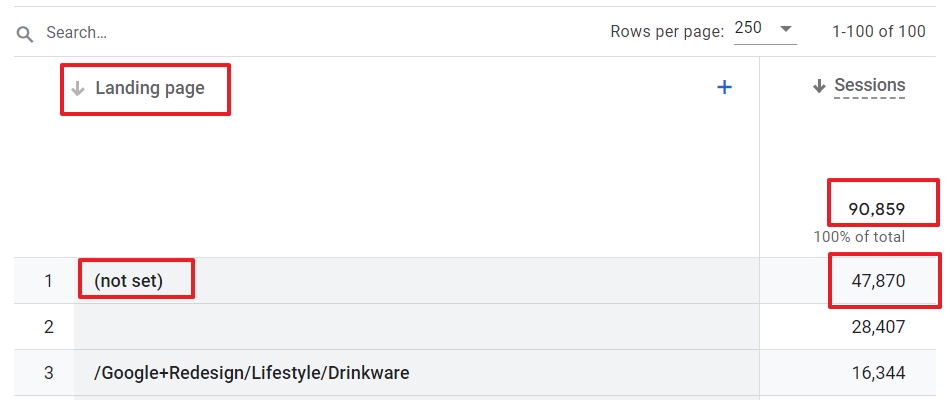
If you can’t see your landing pages, you are left in the dark about
- Opportunities to drive more traffic to high converting landing pages
- Which landing pages require fixes because people don’t interact with the content.
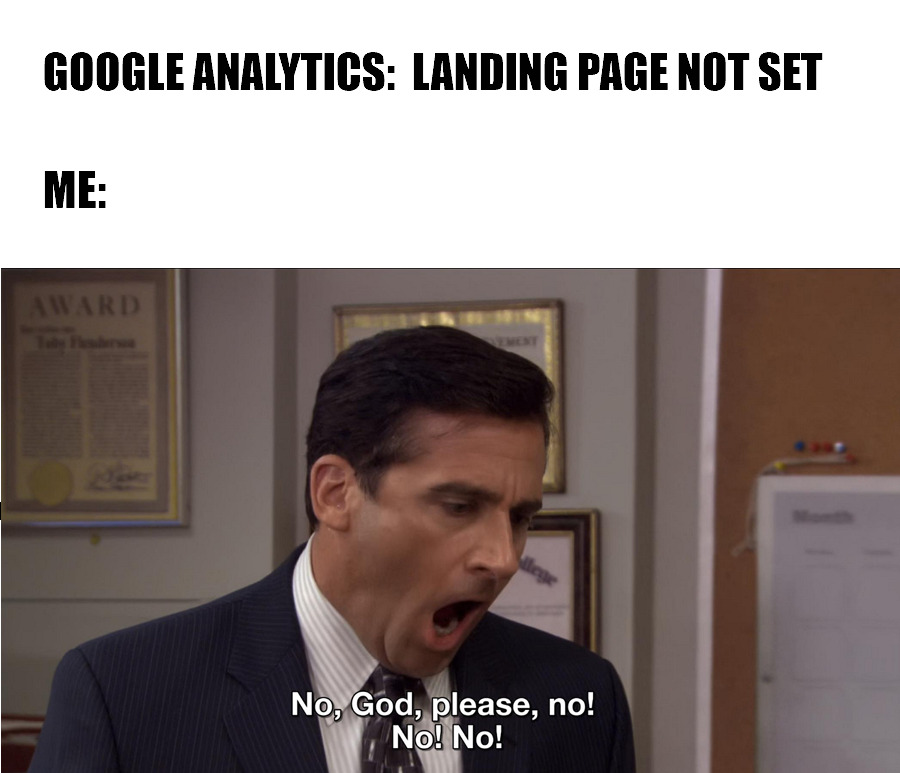
The Landing page + query string is a far better dimension, but only if you use it in another type of report.
How to create a landing page report in GA4?
You can build two different types of landing page reports in GA4 yourself: a customized detail report, or an exploration.
Customize the landing page report
This is the quickest way to align the report with the goals of your website, web app, or web shop.
If you don’t track, for instance, revenue, there is no point in keeping that metric in the table. After all, staring at zeroes is hypnotizing and drags you further down the void.
The steps to create your custom landing page based on the default report are as follows.
- Copy the default landing page.
- Customize it. Follow the step-by-step instructions of our detailed guide about customizing reports
- Save the report.
- Add it to your menu, as described further below.
How to create a Landing Page exploration in GA4?
The main advantages of creating a landing page exploration report are:
– It reduces the amount of Not set in your report
– You can add more than 2 dimensions to your report
In summary, these are the steps you need to take.
Step 1: Create a Blank exploration
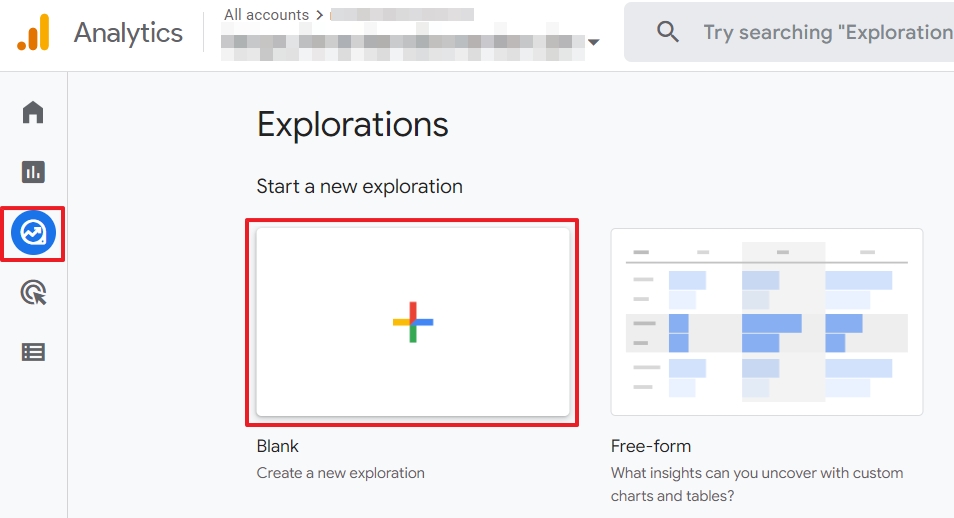
Click on Explore in the menu on the left and then on Blank.
Step 2: Give your report a name

You can do this at any point in the process. Just make sure you use a descriptive exploration name.
Step 3: Click on the + sign next to Dimensions.
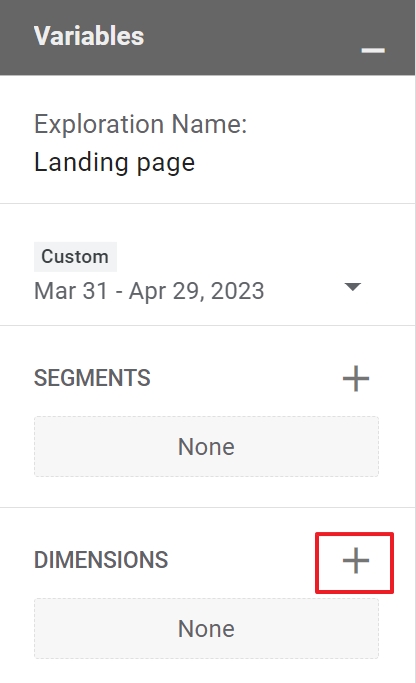
There are no dimensions in a blank report, so you first need to add it in the Variable panel.
Step 4: Import the Landing page + query string
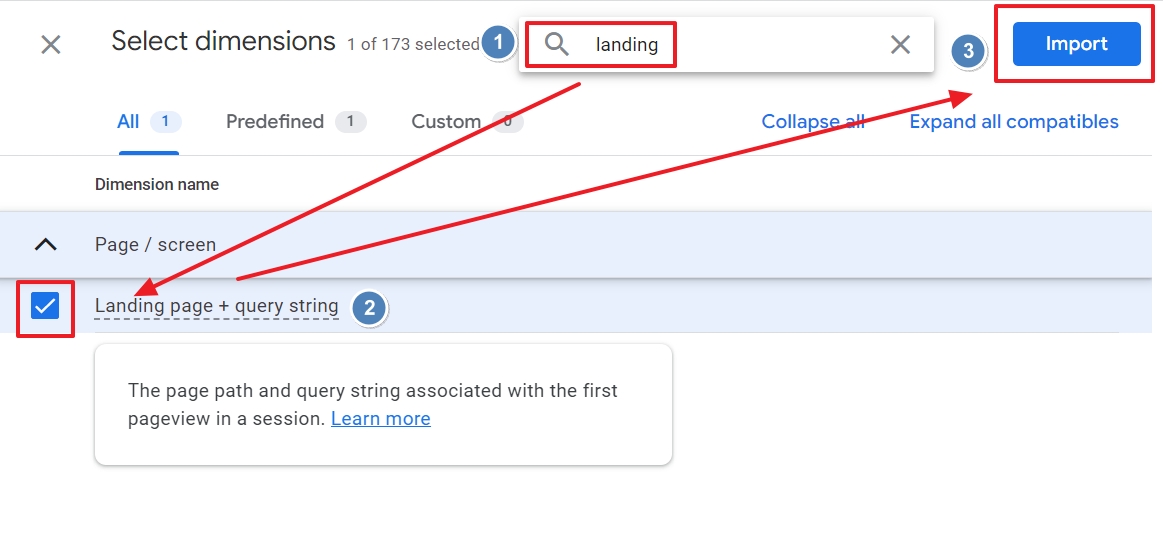
Use the search box and select Landing page + query string.
Then click the blue Import button.
Step 5: Add the dimension to a row

Double click on the dimension to add it to your report as a row.
Step 6: Add metrics to your landing page report
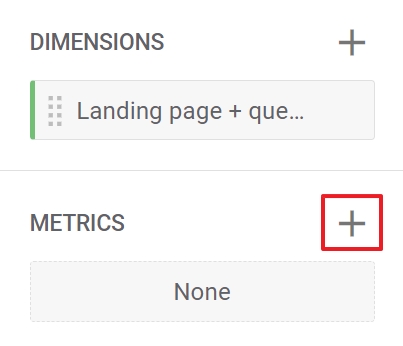
In the Variables panel, click on the + sign next to Metrics.
Step 7: Import the metrics

Click Expand all compatibles and select the metrics that are important for you.
Alternatively, you can use the metrics that are used in the default landing page report:
– Sessions
– Users
– New users
– Average engagement time per session
– Conversions
– Total revenue
When you’re finished, click on the Import button.
Step 8: Add the metrics to your report

In the Variable settings panel, double click on the metrics to see the Values of the metricsin your report.
Congratulations, you have successfully built a custom landing page report.
In the example below, you can see that the Not set issue of the default report is gone. The conversions and total revenue also have a more prominent space in the report.
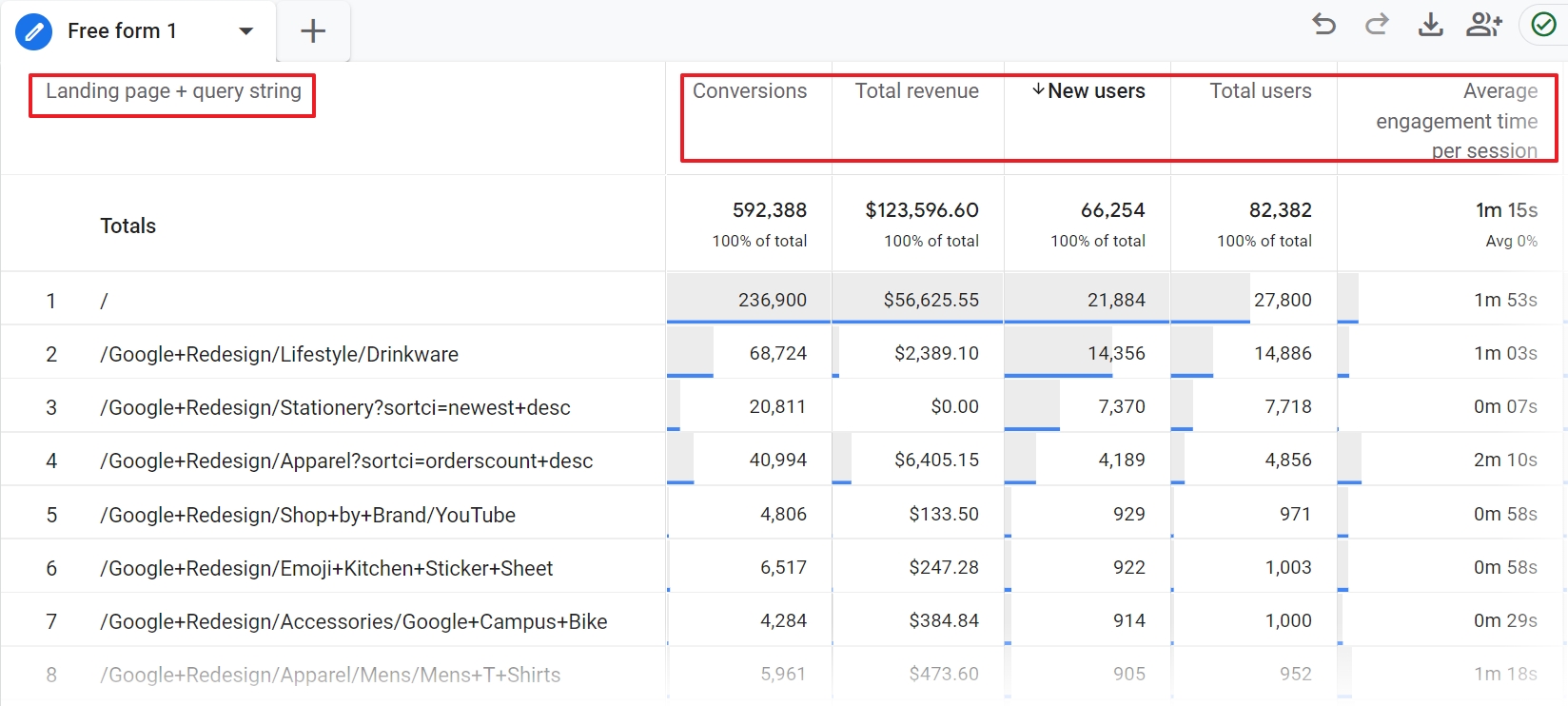
You can fine-tune the exploration report even more. And when that’s done, it’s time to create a link to it so you and your team can access it whenever it’s needed.
Like any other report in GA4, you can add it, rename it or place it in the menu wherever you want to.
Step 1: Open the Reports Library
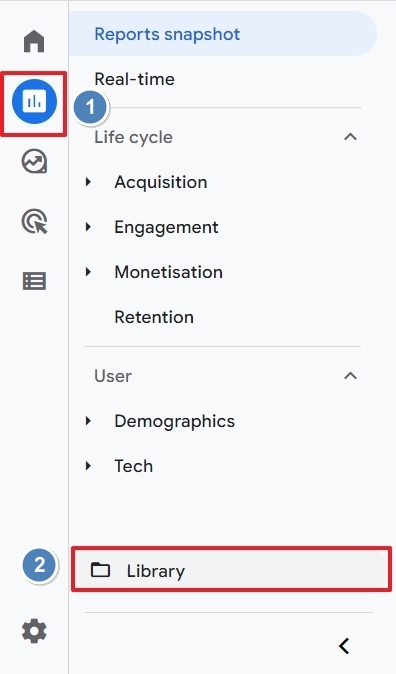
Go to Reports > Library.
Step 2: Edit the Life cycle collection
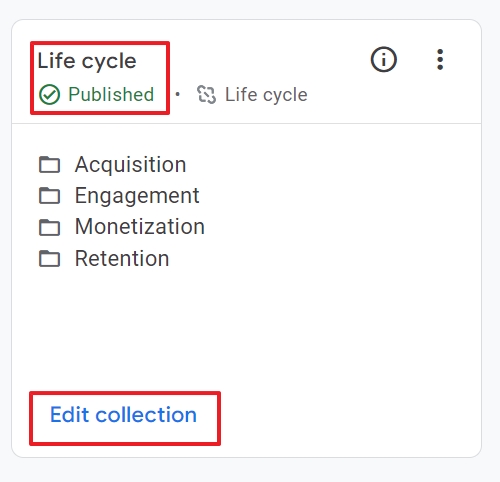
Click the link Edit collection of the published Life cycle collection.
Step 3: Add the report to the collection
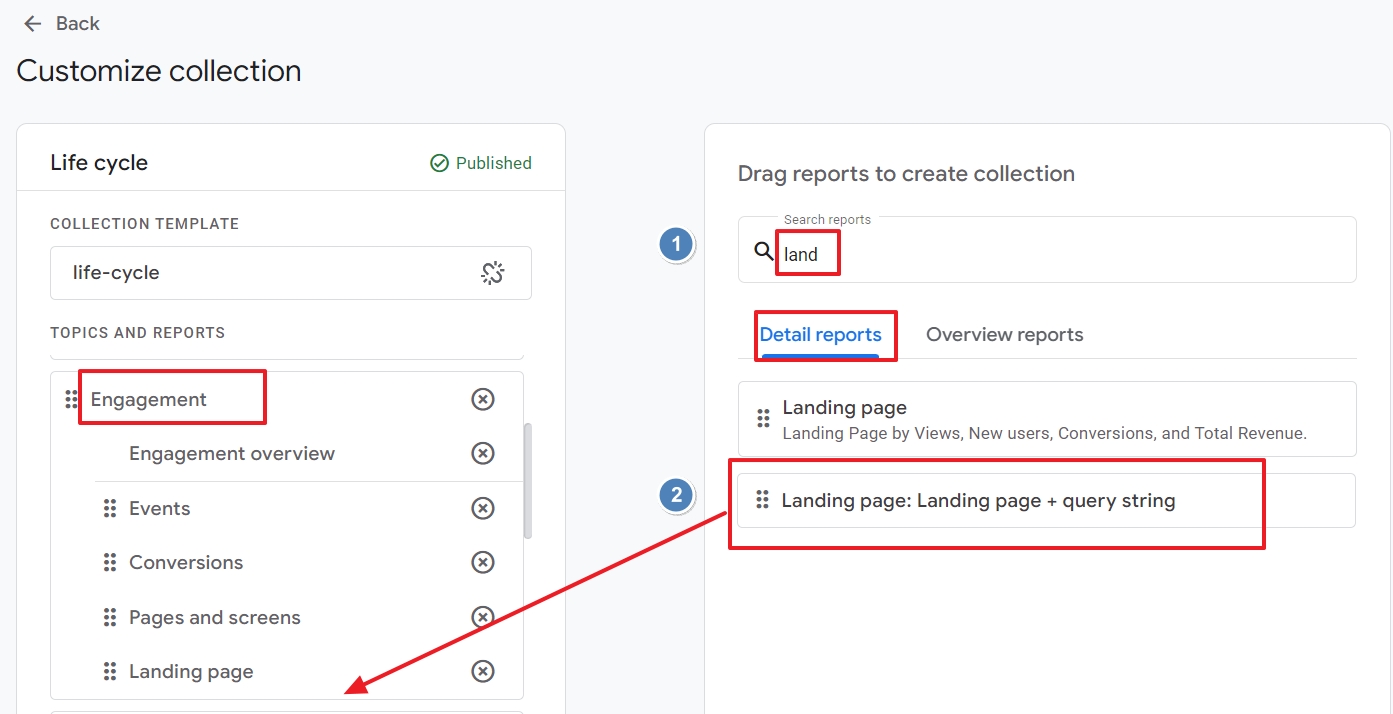
Search your report in the tab Detail reports and drag it under Engagement in the card on the left.
Step 4: Organize and save your collection
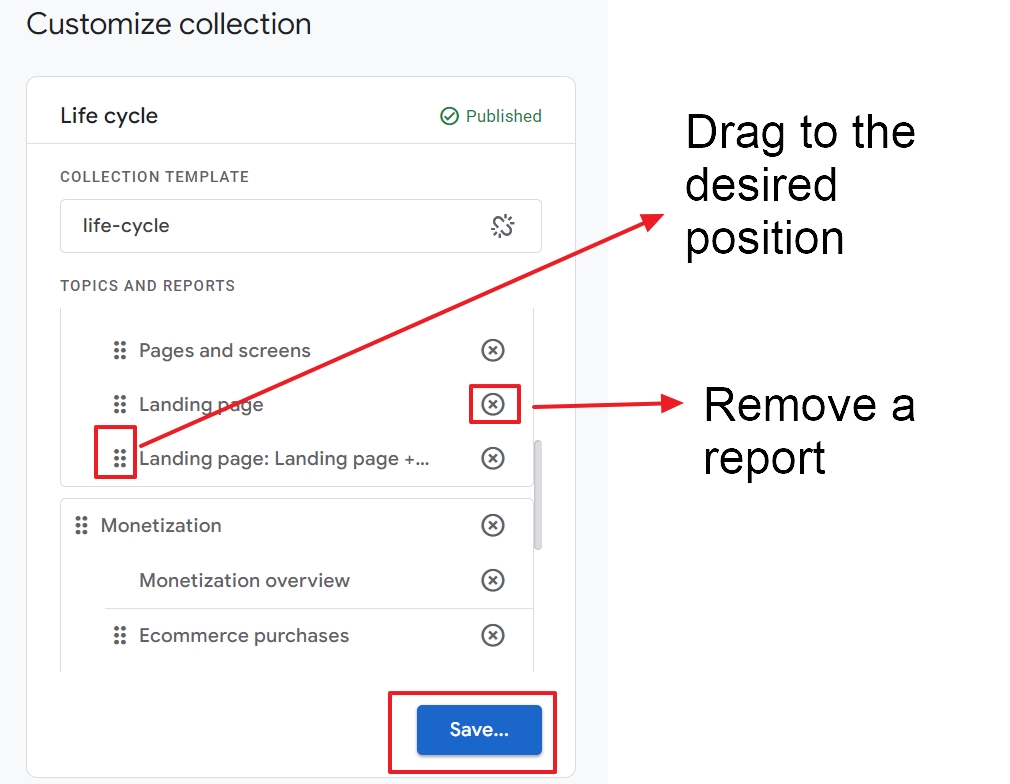
You can remove the default Landing page by clicking on the cross next to it.
To move it, you click on the 6 bullets and drag it to the desired place in the menu.
If you are happy with the result, click on Save > Save changes to current collection.
Step 5: Click Back
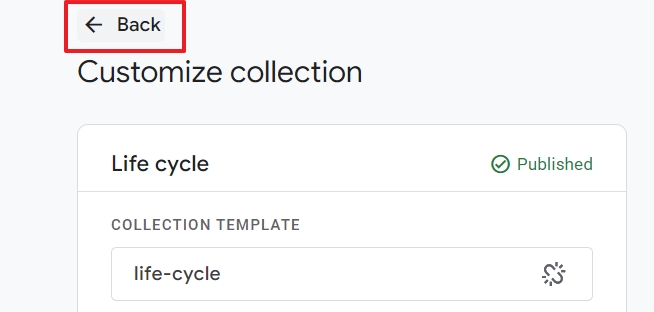
Click on Back at the top of your page.
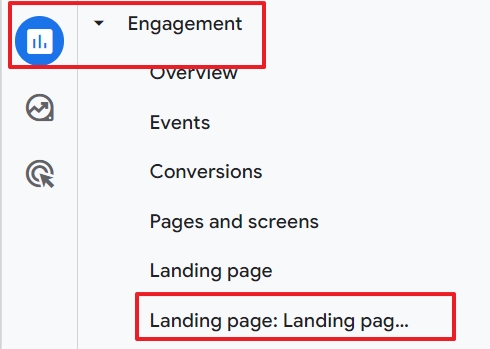
Navigate to Reports > Engagement and check if your report is there.
As an admin or editor, you can do a couple of more things with reports that are in the library.
Click on the 3 dots next to it and you can see what actions you can take.
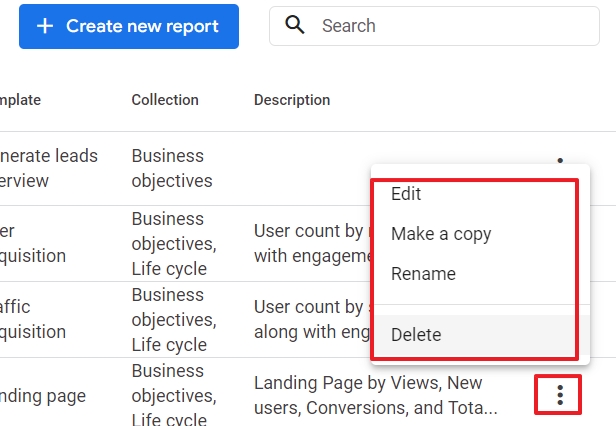
- Delete: don’t. There is a good reason there are default reports in GA4. Keep them.
- Rename: that kind of makes sense because the default name is Landing Page: Landing Page. That may look silly, but it is because there is not only a report but also a landing page dimension in GA4.
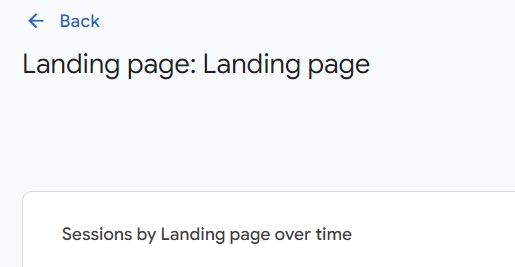
- Copy: this is the thing to do if you are not happy with the default report.
- Edit: you can change dimensions of the landing page report and a lot more, but first, let’s have a look at what you can find in the standard report.
In Summary:
The steps above explain you how to build a landing page report that is:
- not dealing (as much) with Not set as the default GA4 report
- fully customized to the dimensions and metrics that matter to you
- easily accessible from the navigation menu.
So…
What’s your next best move?
If organic search traffic is a part of your marketing strategy, you will benefit from seeing which search terms in Google make people land on your site.

It only takes a couple of minutes to add this report to your GA4 account. All you need to do is follow our step-by-step instructions in this free PDF.
On behalf of the Data Driven U team, I hope this GA4 landing report guide will improve your analysis of the entries where your visitors are landing on your site, web shop or web application.
